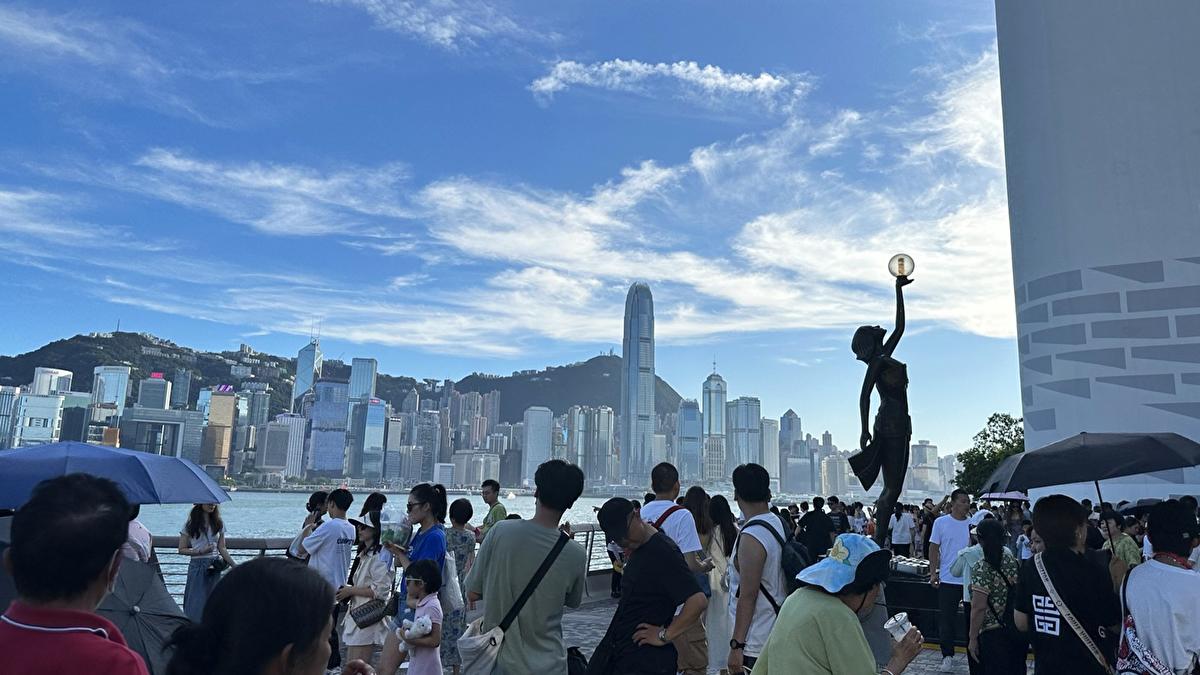
Hong Kong’s commercial real-estate market showed a mixed performance in the first quarter of this year, with retail properties gaining growth momentum and offices facing downward pressure amid a sustained recovery in tourism, but shrinking business demand.
In the first three months of 2024, the vacancy rate of retail stores fell by 2.5 percentage points to 6.6 percent on a quarterly basis -- the lowest level since the fourth quarter of 2019 -- according to a report released by commercial real-estate services provider CBRE on Tuesday.
The special administrative region’s four core commercial districts -- Central, Causeway Bay, Tsim Sha Tsui and Mong Kok -- recorded single-digit vacancy rates. Rents went up by of 2.7 percent -- the largest quarterly growth since the third quarter of 2022
The special administrative region’s four core commercial districts -- Central, Causeway Bay, Tsim Sha Tsui and Mong Kok -- recorded single-digit vacancy rates. Rents went up by of 2.7 percent -- the largest quarterly growth since the third quarter of 2022.
With a steady rebound in tourist arrivals and the SAR government introducing a diverse array of mega events, Lawrence Wan, senior director of retail advisory and transaction services at CBRE Hong Kong, said he’s positive about the leasing market of retail stores.
“Hong Kong’s retail properties’ value is growing as rents have dropped to a relatively low level,” said Dorian Zhi, senior director and head of retail services at Savills South China -- an international real-estate advisory firm.
A growing number of Chinese mainland retailers and dining brands are starting operations in Hong Kong, he said, noting that a mainland business owner has rented two shops in Hong Kong within four months.
“Previously, a large proportion of businesses’ revenue had gone to rents in Hong Kong, which was a heavy burden for them. Now, many mainland businesses believe it’s a good time to expand into the Hong Kong market which, they think, could enhance their competitiveness because of lower rental costs,” Zhi said.
In the other direction, as the “head north” trend to shop in Shenzhen intensifies among Hong Kong residents, more smaller businesses from the SAR are planning to expand In Shenzhen. “This is different from the previous situation, because these with such intention are small self-employed businesses, rather than large chain brands,” he said.
Hong Kong’s offices market, meanwhile, is performing differently. According to CBRE, although the number of office leasing transactions surged by 35 percent in the first quarter of this year, compared with the previous quarter, a high vacancy rate of 16.7 percent had led to a 1.2-percent fall in rents, marking the 20th consecutive quarter of rental decline.
“As businesses try to control costs and the supply of new offices goes up, the vacancy rate is expected to keep rising, making it difficult for office rents to see any significant increase throughout the year,” said Ada Fung, head of advisory and transaction services at CBRE Hong Kong. In the short term, this will put tenants in a favorable spot, she said.
On the mainland, an extra supply of 312,000 square meters of Grade-A office space in the first quarter of the year has further pushed up Shenzhen’s vacancy rate of first-class office buildings, hitting 30.6 percent at the end of last month, representing a 6.2-percentage point rise year-on-year, according to Savills.
Average monthly rental prices of Shenzhen’s Grade-A offices dropped 6.7 percent to 163.9 yuan ($22.67) per square meter in the same period, compared with a year earlier.


